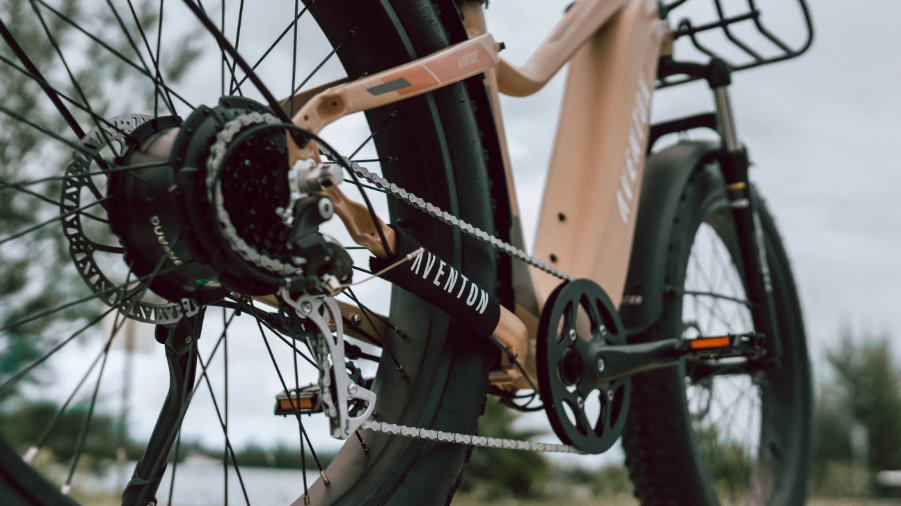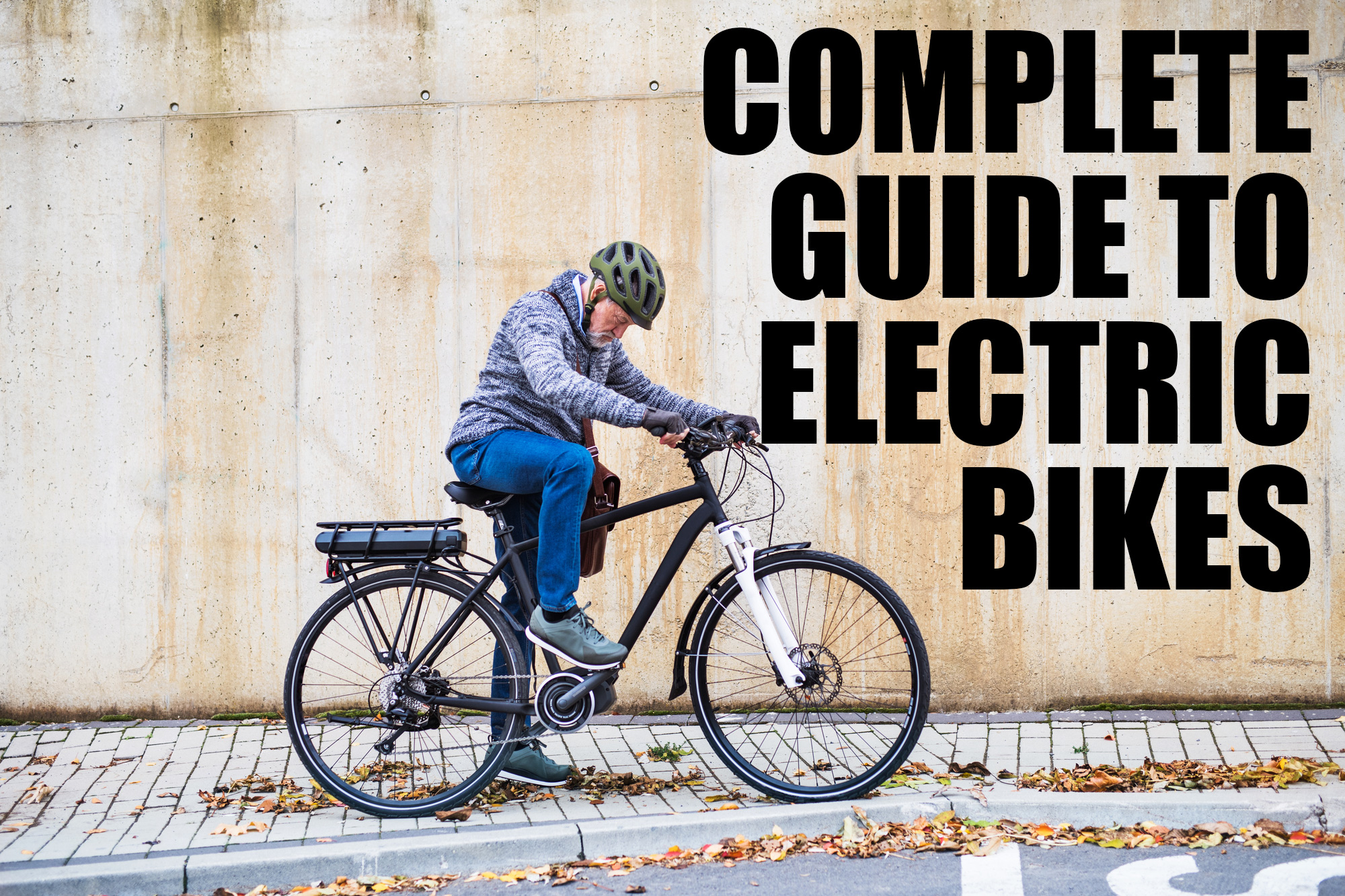Cycling has dramatically changed in the past decade, and because technology is advancing so quickly, we’re seeing faster, lighter, stronger, and more capable bikes than ever before. One of the biggest differences has been the development of electrical technology in bikes. Years ago, electric bikes were rare, and seeing one on the roads was a novelty, but they were very basic. They looked chunky, the range wasn’t very good, and the battery took a long time to charge.
That isn’t the case anymore, as electric bikes now are incredible to a point you can’t tell the difference from a normal bike, they are incredibly powerful, and some have enough charge to go further than 100 miles.
What a lot of people don’t understand is what makes an electric bike and how it works. In this article we’re going to speak about how an electric bike works, the different types of electric bikes you will find on the market, the rules and regulations about them, and answer some of the most commonly asked questions.
What is an Electric Bike?
An electric bike is classed as a motorized bicycle. It uses an electric motor and a battery to assist itself in propulsion. Electric bikes can be controlled in different ways. Some work like a moped where they have a throttle, and others only assist you when being pedaled. Electric bikes come in different classes, which look like this;

Class 1
A class one E-bike is one of the most popular and common on the market. They are very easy to ride, and most have a top speed of 20mph. A class one electric bike will only give you assistance when you are pedaling, and as soon as you stop or brake, the bike will automatically shut the motor off. A class one E-bike will give you a natural feel while riding, and many come with options with the amount of assistance it will provide you.
Class 2
A class two electric bike is very similar to a class one in the fact it has a maximum speed of 20 mph. What sets it apart from a class one electric bike is that you can use a throttle instead of pedaling, typically alongside a pedal assist option. Class two bikes will be equipped with a small throttle switch where you can ride along using that instead of having to pedal to activate the motor.
Class 3
A class three electric bike is the most powerful available and can go up to 28mph. They have to be fitted with a speedometer and depending on where you live, and they are not allowed on certain cycle paths and routes due to being very fast and powerful. These bikes are not often allowed in local parks. Some come with a throttle, and others are pedal-assisted. Some companies give the ability for a class three bike to be self-restricted to a class two via a key or switch, but this is uncommon.
Class 4
A class four is an electric bike that can go above 28mph and has power above 700w. They are incredibly powerful but require the user to have a license to ride them and are classed more as a motorcycle than a bike.
How does an Electric Bike work?
Electric bikes work in a special way. They are made up of a few different components, a motor, battery, sensor, and controller.
Electric Bike Motors
Electric bikes all require a motor to drive the bike forward. You have a few different kinds of motors. The most common two you will see are a hub motor and a crank motor. Motors come in different sizes, starting around 250w and ranging up to 1500w in power. They are surprisingly quiet and have an incredible amount of power.
Where is the motor located? A hub motor sits inside the front or rear wheel and is a large disc shape where the motor drives it forward from the wheel. Then you have the crank-based motor. This sits on the inside of the frame where your pedals are situated and drives the bike forward either through the pedal crank or on the chain itself. The crank motor also called mid drive motor is what you will see on most high-end bikes and is typically the most efficient.

Battery
A motor would be useless without a battery to power it. E-bike batteries come in all shapes and sizes. Some are situated on the back of the bike on a rack, and others are hidden inside the frame. The smaller electric bike batteries start roughly around 250Wh and go up to about 700WH.
How long does a battery last? A battery’s duration depends on two things. The first is capacity. The bigger the capacity the more charge it can store to send to the motor. Then you also have the intensity you run the motor. If you are at full power, it will drain your battery much faster than an eco mode. Batteries typically range anywhere from 25 to 75 miles.
Controller
You need a controller to combine the battery and the motor and ensure they work properly. These are the most vital part of an electric bike. You have two types of controllers, automatic and manual.
The two automatic controllers ebikes use are a speed sensor and a torque sensor. A speed controller engages as soon as the bike starts moving forward and tells the motor to turn on. A torque controller is much more intelligent and can sense the amount of force you are applying to the pedals and can adjust the pressure it thinks it should add depending on the power setting you’re on.
Some bikes are not controlled by sensors. They are controlled manually by a switch. This will be a switch such as a throttle that you can press, and the more pressure applied, the more the motor will engage and the faster you will go.
Assistance Levels
Assistance levels are the amount the bike is going to help you with its own motor. Typically you will have four different levels of assistance.
- ECO – Mixed assistance, made for battery saving.
- LOW – Little assistance, typically 30% of motors power, conserves battery excellently.
- MEDIUM – Gives good assistance, around 60%, and uses battery at an average pace.
- HIGH – Gives 100% of the battery’s power. It will drain quickly.
Speed and Weight
Electric bikes come in many different sizes and different types. In general, you will find electric bikes weigh much more than a typical normal bike. This is because of the motor, battery, controller, and wiring. Here’s roughly the original weight of some bikes and the electric equivalent.
| Bike Type | Standard Weight | Electric Weight |
| Road Bike | 9kg | 13kg |
| Mountain Bike | 11kg | 15kg |
| Commuter | 10kg | 14kg |
| Folding | 11kg | 15kg |
You will generally find that electric bikes weigh about 4kgs more than a regular bike. Although heavier they are easier to ride because of the assistance they give you and require less pedal power.
How fast are E-Bikes?

Ebike Speed: Just How Fast Can They Go?
Electric bikes are very quick and often surprise people on first use. The motors are very powerful and can take you many miles quickly. Generally, electric bikes are restricted to certain speeds. Class one and class two can only go to 20mph, but class three will go to 28mph.
E-Bikes can comfortably go at the top speed for as long as the battery will last and this is safe to do so. Provided there is nothing in your way and you’re on a fairly straight road and pedaling to engage the sensor your bike will have the ability to sit at 20mph or 28mph. Unrestricted bikes can be incredibly powerful and a 1000w bike can get all the way up to 35mph. There have been reports of some custom 8000w E bikes going all the way up to 70mph.
Can Electric Bikes be unrestricted?
A common question we are asked is if electric bikes can be unrestricted. Yes, they can, and this is done by removing the limiter wire. It will unlock the bike’s full potential but does come with some problems such as;
- Warranty get removed. As soon as the limiting wire is removed, you are able to go faster, but this can damage your motor, and because of this, companies who produce the bike will not honor the warranty. So if you have any problems, they cannot be returned.
- You can use them in certain places. Electric bikes that can go over 20mph are not allowed on certain trails and cycle paths. This is because they are very fast and considered dangerous. An electric bike passing people at 30mph on a small path is scary and can cause terrible accidents.
- They can become classed as a moped. Once unrestricted, some countries class an electric bike as a moped. This means they need tax, insurance, and the bike itself must be registered. The rider must also wear a helmet and have certain lights on the bike.
Belt vs Chain Drive Electric Bikes

You will often hear of electric bikes coming with a chain or a belt drive. A chain drive is what you will find on a typical bike, which allows the bike to change gears and run through derailleurs easily. It does need oiling and it will be required to be changed roughly every 2000 miles.
Chain Drive Pros
- It can be used with gearing
- Cheap to buy
- A lot of availability in local bike shops
Chain Drive Cons
- Requires oil
- Need to be replaced often
- Noisy

A belt drive is very different from a chain drive. It cannot be used with a standard derailleur for gearing and must be used with hub gears. It can be more challenging to fit than a chain, but it requires no oil, will last between 10,000 and 20,000 miles, and is very quiet.
Belt Drive Pros
- No oil required
- Lasts 10,000 to 20,000 miles
- Very quiet
Belt Drive Cons
- Hub geared only
- Harder to source
- Belt drive bikes are generally more expensive
Types of Electric Bikes
As mentioned earlier electric bikes come in all different shapes and sizes. The unique thing about bikes is that they are made for different jobs, and this is the same with electric versions too. In this next part, we want to tell you all about the different types of E-bikes and what their intended purpose is.
Standard Cruiser and Commuter E-Bikes
- Comfortable
- Many different designs
- Excellent for commuting
- Cheap to buy
- Lots available
- Can go on multiple terrains
A standard cruiser and commuter type bike is the most popular you will find on the electric bike market. They are made to be very comfortable and designed for fun days out on the bike and leisurely commutes to work or to the shops. They can go on mixed terrain but are essentially designed for cycle paths, light trails, and road riding.
They have small batteries and motors and are typically class one or class two bikes with a maximum speed of 20mph. Basic gearing consists of 7 speeds and typically uses aluminum frames which are fairly light but very strong. These frames come in standard and step-through versions and have an upright riding position.
Road E-Bikes
- Fast
- Aggressive Design
- Excellent for going fast and riding far
- Lots available
- Great for road riding
Road cycling is one of the most popular disciplines when it comes to bikes, and people are constantly challenging themselves in sports and in road racing. In the past few years, E Road bikes have become very popular and from the top brands now look identical to a typical road bike with everything hidden inside the frame.
They are normally class one and class two bikes and are made to go fast and make the work easy for the rider. They have advanced gearing systems like on a normal road bike with up to 22 gears, and the frames are made of aluminum and sometimes even carbon fiber. These are the lightest E-bikes you will find and are made to put you in a fairly aerodynamic position while still giving you a good amount of comfort.
Folding E-Bikes
- Convenient
- Comfortable
- Excellent for commuting
- Great for riding in a city
Folding bikes have recently had an upgrade and now many companies are offering electrical options too. Electric folding bikes are very small and excellent for commuting in a city or if you live in a small flat as they require little space to store.
They are made of steel or aluminum and small in size but not the lightest electric bikes you will find. The folding gear does come with extra weight. You have very basic gearing, and batteries on electric folding bikes are typically quite small. They are great if you commute on trains or live in a small apartment. Folding bikes are designed for roads and cycle paths and are very popular in cities.
Off Road E-Bikes
- It can be ridden anywhere
- Suspension
- Excellent for adventures
- Comfortable
- Help improve motor skills
Off Road electric bikes are one of the most popular and offer so much fun for the rider. They can take you anywhere and give you a huge amount of fun when you hit a trail. They are designed to help the rider get more out of their off-road cycling, either to go further or to get to the top of the course more throughout the day to practice going down more.
They are very similar to a typical mountain or off-road bike and use the same gearing, so you have a huge amount of gears to climb up steep hills. Many of these bikes also have suspension making getting over obstacles very easy, and are great for improving cycling skills and confidence. Off-road electric bikes come in many different forms and are designed for different jobs. Here’s a few different types of off road electric bikes:
- Hardtail Electric Mountain Bikes. They are made for cross-country and general light off-road riding.
- Full Suspension Electric Mountain Bikes. Made for Enduro, downhill, and aggressive trails.
- Electric Gravel Bikes. They are made for light trails and mixed riding, great for bikepacking.
- Fat Electric Bikes. Excellent for beach riding and also riding in the snow.
